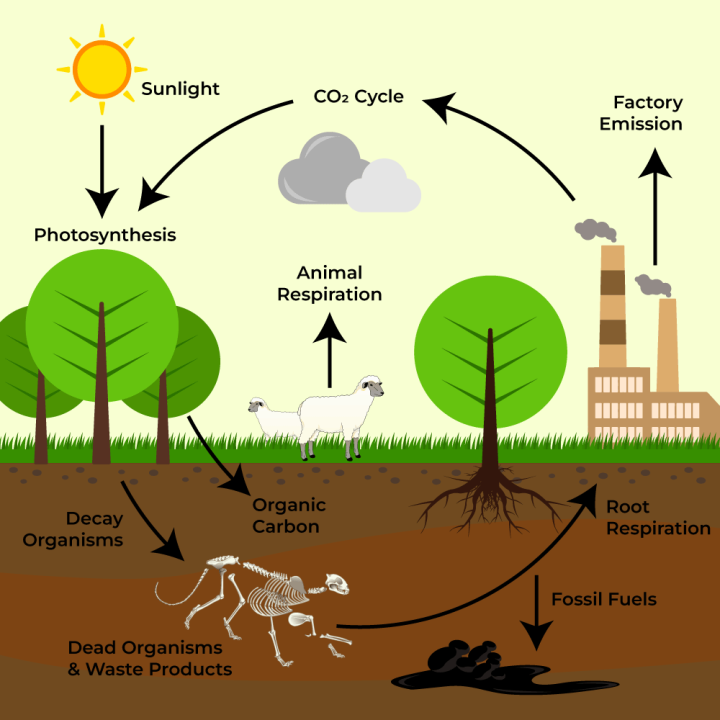
The Carbon Cycle: Understanding Earth's Essential Element and its Role in Global Climate Change.
Carbon is a fundamental element that plays a vital role in the planet's natural environmental processes. The carbon cycle refers to the continuous exchange of carbon among the Earth's atmosphere, oceans, and land through various biological, geological, and physical processes.
Understanding the carbon cycle is essential to grasp the changes in climate, rising CO2 levels, and the impacts of climate change on human life. NASA's research on the carbon cycle provides insight into how carbon interacts with the Earth's natural systems, which is essential in monitoring the planet's health.
Carbon Cycles
The process of carbon cycles starts when carbon dioxide (CO2) enters the atmosphere. The CO2 can come from natural sources such as forests and oceans, volcanic eruptions, wildfires, or human activity such as burning fossil fuels. Carbon from the atmosphere is absorbed by plants and converted to organic matter through photosynthesis. The carbon that plants store in their biomass becomes a food source for the animals that eat them.
When animals breathe out or decompose, the carbon they carry is returned back to the atmosphere. Carbon can also be stored in landforms like soil and groundwater, where it can remain for thousands of years. When carbon is stored in these areas, it is called a carbon sink.
The ocean is another critical carbon sink that absorbs about 25% of the carbon dioxide we produce. When carbon dioxide interacts with seawater, it becomes carbonic acid, which has the potential to dissolve calcium carbonate structures like coral reefs and shells, hindering marine life's growth.
Human Impact on Carbon
Human activities, including the burning of fossil fuels, deforestation, and agriculture, disrupt the carbon cycle's natural equilibrium. These activities have caused a massive increase in CO2 levels in the atmosphere, trapping more heat from the sun, resulting in global warming and climate change.
NASA has been monitoring the carbon cycle for decades using high-tech equipment on satellites. These tools help researchers estimate the amount of CO2 in the atmosphere and track carbon sinks like forests and oceans to get a better understanding of the carbon cycle.
Conclusion
Carbon is an essential building block of life, and understanding the carbon cycle is essential for managing the Earth's environment and mitigating the impacts of climate change. The carbon cycle is a complex and delicate balance that we need to monitor and regulate to sustain the planet's health. It is up to individuals, communities, and governments to understand their impact on the carbon cycle and take steps to mitigate their carbon footprint. With NASA's research and publicly available data on the carbon cycle, we can all make a difference in preserving the planet for future generations.
Sources: NASA, Inergency, Egreenews
#NASA #spacenews #space #rocket #spacecareer #spacejob #inspiration #perseverance #spaceindustry #newzealand #spacespecialists #spacematesonline #NASA #ESA #asteroid #asteroid2023 #earth #skyheadlines #exploremars #mars #humanspaceflight #space #spaceexploration #saveearth #marsgeneration #event #Hollywood #MotherEarth #inspire #millenial #SpaceX #elonmusk #NASAjobs #inergency #egreenews #elclubdecomerciantes #naturaldisasters #flood #wildfire #earthquakes #hugihernandez #heatwaves #tornados #watercrisis #hurricanes